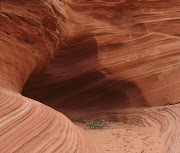
 upplied yet tenacious Mexican Army. At the time, America was a two nation cou
upplied yet tenacious Mexican Army. At the time, America was a two nation cou ntry dragging the southern part back into reunification one bloody battlefield at a time with no real interest in Mexico's internal strife. Besides, America considered France a friend. The people of Pueblo harbored no such illusions. The whole American friendship thing exited with the idea that an emperor or monarchal rule went against what the young war torn nation had fought against before the French republicans lopped off Marie Antoinette's head. Mexican men & women fought off a better supplied Second Empire army that had a disticnt advantage of twice as much manpower to thwart the colonization of central Mexico. It took six years before France threw in the towel when they went in expecting an early crushing of dissent victory after installing Emperor Napoleon's puppet as a Mexican Emperor, the soon to be executed Archduke Ferdinand Maximillian of Austria by Benito Juarez's order.
ntry dragging the southern part back into reunification one bloody battlefield at a time with no real interest in Mexico's internal strife. Besides, America considered France a friend. The people of Pueblo harbored no such illusions. The whole American friendship thing exited with the idea that an emperor or monarchal rule went against what the young war torn nation had fought against before the French republicans lopped off Marie Antoinette's head. Mexican men & women fought off a better supplied Second Empire army that had a disticnt advantage of twice as much manpower to thwart the colonization of central Mexico. It took six years before France threw in the towel when they went in expecting an early crushing of dissent victory after installing Emperor Napoleon's puppet as a Mexican Emperor, the soon to be executed Archduke Ferdinand Maximillian of Austria by Benito Juarez's order.
 e beaten by the few people under the command of General Ignacio Zaragoza Seguín. The Execution of Maximillian I (and only) of Mexico was captured by the renowned Spanish painter, Édouard Manet in a painting of the ame name. In the 21st century, Cinco de Mayo captures the American imagination while giving those of Mexican descent a means to celebrate a part of its rich heritage.
e beaten by the few people under the command of General Ignacio Zaragoza Seguín. The Execution of Maximillian I (and only) of Mexico was captured by the renowned Spanish painter, Édouard Manet in a painting of the ame name. In the 21st century, Cinco de Mayo captures the American imagination while giving those of Mexican descent a means to celebrate a part of its rich heritage.French interventionism, the first time, went under the anglicized rubric of the Pastry War (1838 -1839) goes by the name, Primera Intervención Francesa en México, in Spanish. The word croissant does not imediately conjur up images of Mexico, but entire battles and many nations including the Republic of Texas became charbroiled over a French baker demanding payment for a ruined shop in Mexico. A French blockade ensued with Americans eventually aiding the Europeans resulting in eventually bringing the venerable Santa Anna out of retirement.

 Cinco de Mayo is now also a cause to celebrate Mexican cuisine and drinks. In a spirit of patriotism the Chiles en nogada uses the three colors of the Mexican flag. Food influences allow people to go forward presenting each with treasures from their own culture. The margarita enjoys a variety of flavors, yet for a few of the orange flavored liqueurs a mexico product with a French label Patrón Citrónge, or the imported Cointreau , blue curaçao produces the stunning blue margarita. Yum. Add a little mariachi music and the celebratio
Cinco de Mayo is now also a cause to celebrate Mexican cuisine and drinks. In a spirit of patriotism the Chiles en nogada uses the three colors of the Mexican flag. Food influences allow people to go forward presenting each with treasures from their own culture. The margarita enjoys a variety of flavors, yet for a few of the orange flavored liqueurs a mexico product with a French label Patrón Citrónge, or the imported Cointreau , blue curaçao produces the stunning blue margarita. Yum. Add a little mariachi music and the celebratio n is ON!
n is ON!It was setting my teeth on edge that the most prominent authors on Cinco de Mayo were Anglo. So after looking here is a great history for the younder set, Cinco de Mayo:Yesterday and Today, from Maria Christina Urrutia and Rebecca Orozco.























